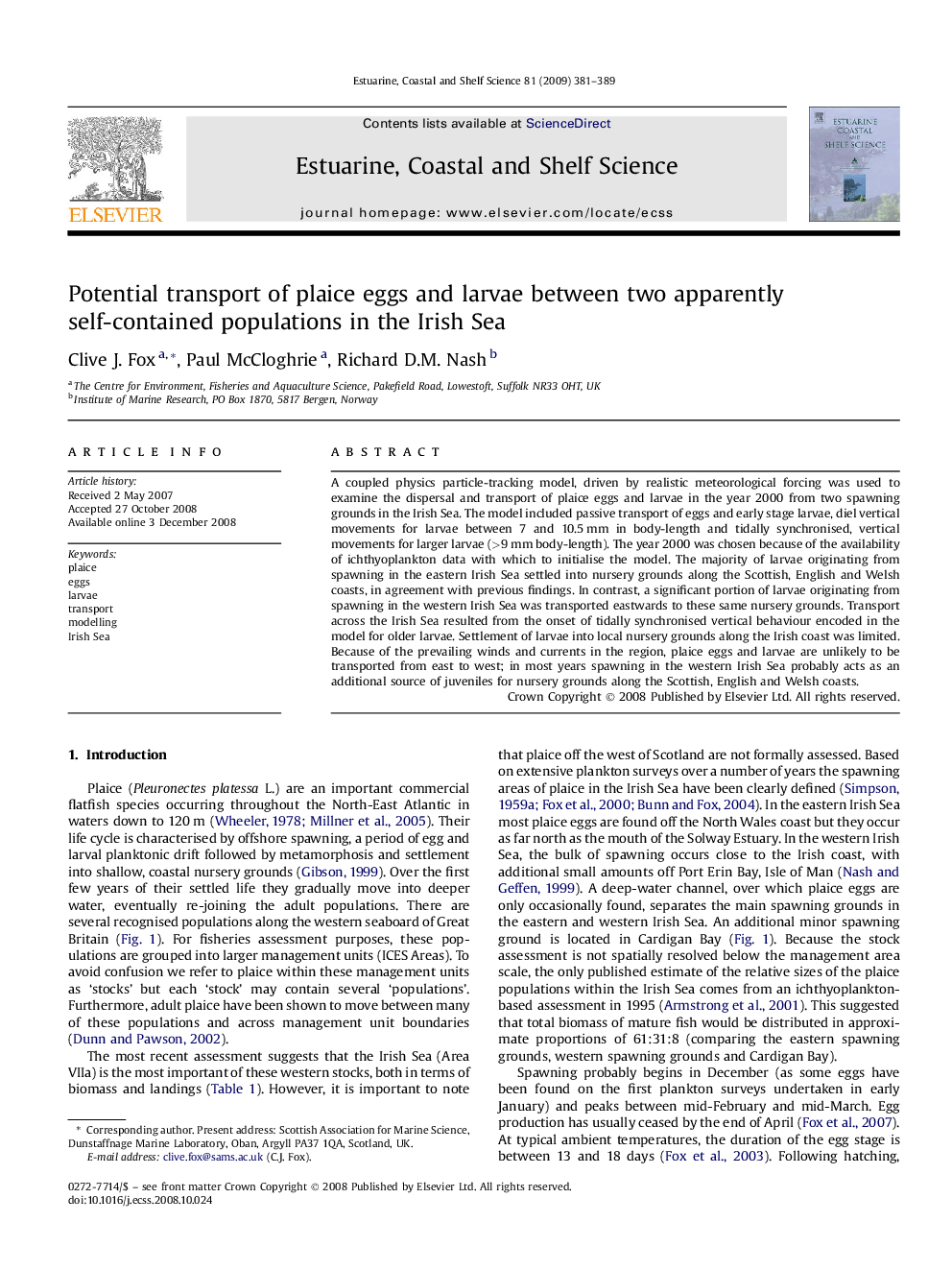| Article ID | Journal | Published Year | Pages | File Type |
|---|---|---|---|---|
| 4541413 | Estuarine, Coastal and Shelf Science | 2009 | 9 Pages |
A coupled physics particle-tracking model, driven by realistic meteorological forcing was used to examine the dispersal and transport of plaice eggs and larvae in the year 2000 from two spawning grounds in the Irish Sea. The model included passive transport of eggs and early stage larvae, diel vertical movements for larvae between 7 and 10.5 mm in body-length and tidally synchronised, vertical movements for larger larvae (>9 mm body-length). The year 2000 was chosen because of the availability of ichthyoplankton data with which to initialise the model. The majority of larvae originating from spawning in the eastern Irish Sea settled into nursery grounds along the Scottish, English and Welsh coasts, in agreement with previous findings. In contrast, a significant portion of larvae originating from spawning in the western Irish Sea was transported eastwards to these same nursery grounds. Transport across the Irish Sea resulted from the onset of tidally synchronised vertical behaviour encoded in the model for older larvae. Settlement of larvae into local nursery grounds along the Irish coast was limited. Because of the prevailing winds and currents in the region, plaice eggs and larvae are unlikely to be transported from east to west; in most years spawning in the western Irish Sea probably acts as an additional source of juveniles for nursery grounds along the Scottish, English and Welsh coasts.
